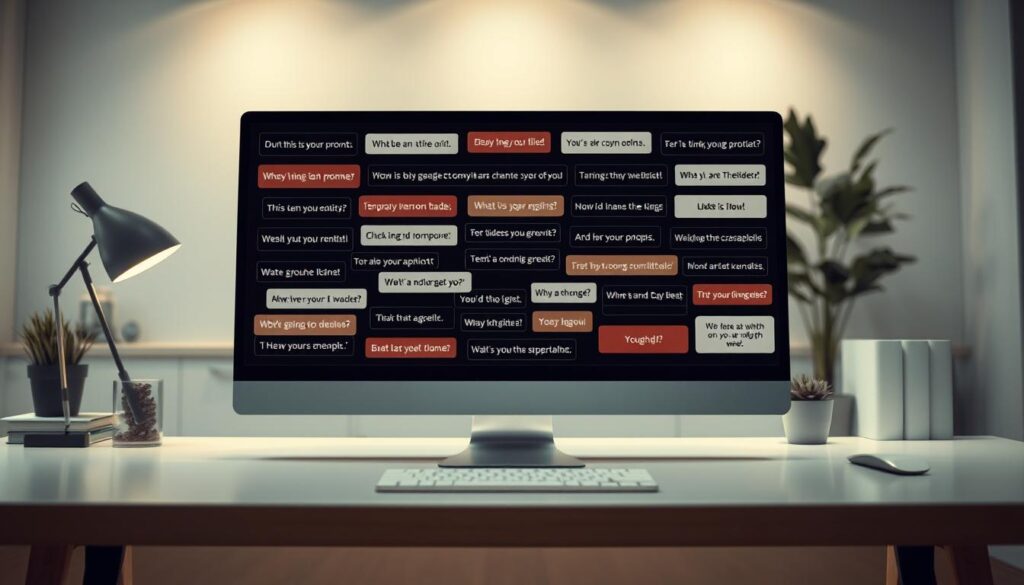Have you ever wondered how to make your chatbot interactions more engaging and tailored to your needs? The secret lies in crafting the right prompts. These prompts act as a bridge between your ideas and the intelligence of the AI, shaping its responses to fit your goals.
In this article, we’ll explore 195 ready-to-use prompts and guide you on how to create your own. Whether you’re looking to boost creativity, streamline professional tasks, or enhance personal projects, these tools can transform your experience. From content creation to storytelling, the possibilities are endless.
By focusing on personality-driven prompts, you can unlock more natural and effective responses. This approach ensures the AI aligns with your tone and intent, making every interaction feel seamless. Ready to dive in? Let’s get started!
Key Takeaways
- Discover 195 ready-to-use prompts for various use cases.
- Learn how to craft custom prompts for better results.
- Enhance chatbot responses with personality-driven techniques.
- Apply prompts in creative, professional, and personal projects.
- Explore real-world applications like content creation and storytelling.
Introduction to ChatGPT Personality Prompts
What if you could give your AI interactions a unique twist? Personality prompts are the key to achieving this. These instructions go beyond basic queries by adding contextual layers like tone, style, and role-play. They help refine outputs to match your specific needs.

For example, instead of asking a generic question, you could say, “Act like a sarcastic life coach.” This assigns a specific role and tone to the AI, making the response more engaging and tailored. Adding depth to your conversations is key to unlocking the full potential of these tools.
Here’s another example: “Pretend you’re my future self and give me advice.” This type of prompt creates a unique scenario, guiding the AI to respond in a creative and meaningful way. Assigning specific traits or roles ensures the output aligns with your intent.
Specificity is crucial. Compare “Write a rap song about SpongeBob” to a vague request like “Write a song.” The first example provides clear direction, resulting in a more focused and relevant response. Choose your words carefully for better results.
This approach is part of a broader concept called prompt engineering. It’s about crafting instructions that guide the AI to deliver the most effective and engaging responses. Ready to explore how this works in practice? Let’s dive deeper.
Why Personality Matters in ChatGPT Prompts
Ever thought about making AI conversations feel more human? The key lies in how you shape the instructions. Adding personality cues transforms generic interactions into engaging, tailored exchanges. These cues guide the AI’s tone, logic, and creativity, making responses feel more natural and aligned with your intent.

How Personality Shapes AI Responses
When you assign specific roles or traits, the AI adapts its output to match. For example, asking it to “act as a detective analyzing a crime scene” results in structured, analytical responses. This approach ensures the AI’s logic and creativity align with your needs.
Compare this to a generic query like “analyze this situation.” The response may lack depth or focus. Personality-driven instructions provide context, guiding the AI to deliver more meaningful and relevant answers.
Here’s a breakdown of how personality cues influence outputs:
| Generic Prompt | Personality-Driven Prompt | Result |
|---|---|---|
| “Write a story.” | “Write a noir detective story.” | Detailed, thematic narrative |
| “Give me advice.” | “Pretend you’re my future self and give me advice.” | Personalized, creative guidance |
| “Analyze this data.” | “Act as a data scientist analyzing trends.” | Structured, professional insights |
Consistency is key. Regularly using personality cues trains the AI to mirror your desired communication style over time. This leads to more natural and effective interactions, whether you’re crafting stories, seeking advice, or analyzing data.
By focusing on context and detail, you can avoid bland outputs and create responses that truly resonate. This approach not only enhances creativity but also ensures the AI aligns with your audience’s expectations.
195 ChatGPT Personality Prompts to Try Today
Ready to take your AI interactions to the next level with tailored prompts? This list offers a variety of ideas to spark creativity, boost productivity, and support personal growth. Whether you’re looking for fun, professional, or self-improvement prompts, there’s something here for everyone.

Fun and Creative Prompts
Looking to add a dash of humor or creativity to your day? These prompts are perfect for writers, artists, or anyone who enjoys a good story. Here are some standout examples:
- “Write a rap song using SpongeBob references.”
- “Pretend you’re an alien assessing hot dogs.”
- “Create a medieval title based on my hobbies.”
- “Describe a day in the life of a sentient toaster.”
- “Invent a new holiday and explain how to celebrate it.”
Career and Professional Development Prompts
Need help advancing your career? These prompts are designed to assist with resumes, interviews, and skill-building. Try these examples:
- “Generate a cold email template for networking.”
- “Review my CV for a marketing role.”
- “Provide tips for answering common interview questions.”
- “Summarize key skills for a project manager.”
- “Create a 30-day plan to improve my public speaking.”
Personal Growth and Self-Improvement Prompts
Working on your goals? These prompts can help you build habits, improve mental health, and stay motivated. Here are a few to get started:
- “Design a workout routine without equipment.”
- “Create a mindfulness exercise plan for stress relief.”
- “Suggest ways to stay productive during a busy week.”
- “Write a letter to my future self with advice.”
- “Develop a morning routine to boost energy.”
Feel free to tweak these prompts to fit your unique needs. By adding specific details, you can make them even more effective. Ready to craft your own? Stay tuned for the next section on how to write custom prompts!
How to Write Your Own ChatGPT Personality Prompts
Crafting effective instructions for AI can feel like unlocking a new level of creativity. Whether you’re a beginner or an expert, writing great prompts involves clarity, structure, and a touch of imagination. Let’s break down the essentials and pitfalls to help you master this skill.

Key Elements of a Great Prompt
To create a prompt that delivers, start with a clear objective. Define the AI’s role, such as “Act as a Python interpreter”, to guide its responses. Specify the format, like “Write a 500-word blog post”, to ensure the output meets your needs.
Adding constraints can also improve results. For example, “Use simple terms for beginners” ensures the content is accessible. Referencing character-building templates, such as “Describe physical appearance reflecting personality”, adds depth and context.
Here’s a quick guide to crafting effective prompts:
- Start with a verb (e.g., “Write,” “Analyze”).
- Add context (e.g., “for a marketing campaign”).
- Include constraints (e.g., “in 200 words”).
Common Mistakes to Avoid
One of the biggest weaknesses in prompt writing is vagueness. Overloading instructions with conflicting details can confuse the AI and lead to irrelevant outputs. Keep your prompts focused and straightforward.
Another common error is ignoring the AI’s knowledge cutoff. Always verify facts, especially for topics that require up-to-date information. For example, asking about events after 2021 may result in inaccuracies.
Here’s a comparison of effective vs. ineffective prompts:
| Ineffective Prompt | Effective Prompt | Result |
|---|---|---|
| “Write something.” | “Write a 300-word article on sustainable living.” | Focused, relevant content |
| “Analyze this.” | “Analyze this data as a financial expert.” | Professional, detailed insights |
| “Give me advice.” | “Pretend you’re a life coach and give me advice.” | Personalized, actionable guidance |
“The key to great prompts is specificity. The more details you provide, the better the AI can align with your intent.”
By focusing on these elements and avoiding common pitfalls, you can elevate your prompt-writing skills. This approach not only enhances the AI’s responses but also supports your development as a skilled communicator. Ready to experiment? Start with a simple prompt and refine it based on the feedback you receive.
Advanced Techniques for Maximizing ChatGPT Responses
Want to get the most out of your AI interactions? Advanced techniques can take your results to the next level. By focusing on context, detail, and tone, you can craft responses that are more engaging and aligned with your goals.

Using Context and Detail
Adding context and detail to your instructions can make a world of difference. For example, instead of saying, “Tell me about a villain,” try “Write a villain backstory with a tragic twist.” The second prompt provides depth, resulting in a richer and more compelling story.
Another effective approach is to assign roles or backgrounds. For instance, “You’re a chef with 20 years’ experience—explain sous-vide cooking” gives the AI a clear framework to work within. This method ensures the response is both accurate and tailored to your needs.
Experimenting with Tone and Style
Tone and style play a big role in shaping AI outputs. Adjusting the formality or creativity of your prompts can lead to vastly different results. For example, “Explain quantum physics like I’m 10” yields a simple, easy-to-understand explanation, while an academic tone might produce a more technical response.
Iterative refinement is another powerful technique. After receiving an initial response, you can ask the AI to revise it. For instance, “Revise the previous response to include more metaphors” adds a creative layer to the output. This process allows you to fine-tune the results until they meet your expectations.
“The key to advanced techniques is specificity. The more details you provide, the better the AI can align with your intent.”
By mastering these techniques, you can elevate your AI interactions to new heights. Whether you’re crafting stories, seeking advice, or analyzing data, these strategies ensure your responses are precise, engaging, and tailored to your unique needs.
Conclusion
Unlocking the full potential of AI starts with the right approach. Tailored instructions can spark creativity, boost efficiency, and make interactions more engaging. Whether you’re exploring life goals or professional growth, these tools can transform your experience.
Test the 195 examples provided and apply the custom-writing framework to suit your needs. Remember to fact-check and edit outputs for accuracy and relevance. This ensures the results align with your expectations.
Ready to take the next step? Share your most hilarious or effective example in the comments! For more tips, explore our advanced resources on mastering these techniques.

